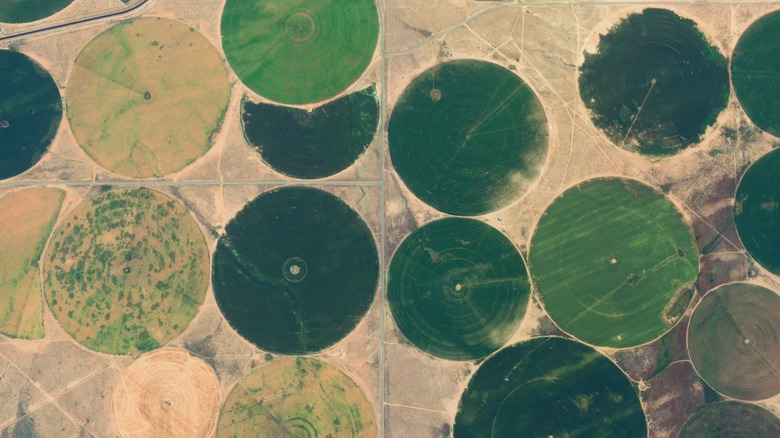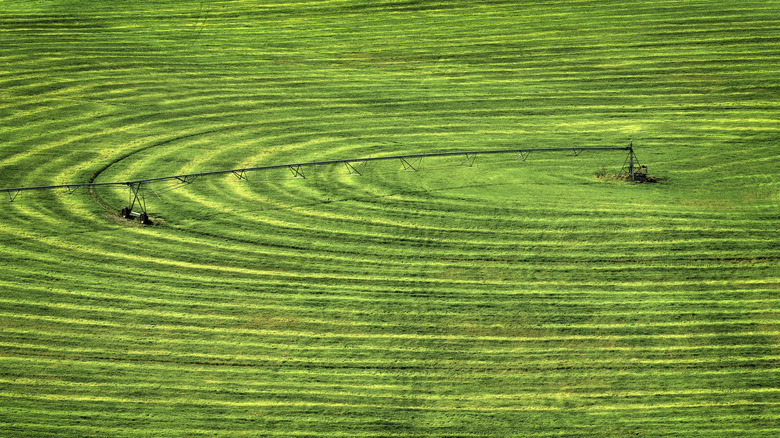What Are Those Green Circles You See From An Airplane?
If you've ever been on a plane flight that took you over the American heartland, you've doubtlessly looked out the window and seen a landscape covered in bright green circles, like a polka dot blanket. Those are crop circles, though not the kind that conspiracy theorists blame on visiting lifeforms from other planets (those are actually landscape art made by humans). The green dots you see from a plane are literally crop circles in that they are circular fields used to grow all kinds of different crops.
These crop circles operate on a system called central pivot irrigation. At the center of each circle is a pivot point. Attached to the pivot point is a steel arm that extends the full radius of the crop circle. There are sprinklers placed at even intervals along the steel arm, which rotates 360 degrees around the pivot point, thereby distributing water evenly across all of the plants.
Central pivot irrigation systems are a blessing to farmers because they minimize the labor required to water a field. They are also much more efficient than other systems such as flood irrigation, where fields are inundated with so much water that a lot of it ends up going to waste through evaporation. This also avoids the risk of overwatering, ensuring healthier and more profitable yields. It's a technology that, whether you know it or not, has completely transformed the agricultural industry, and without it, our food supply could look much different.
Central pivot irrigation systems saved American agriculture
In order to understand just how transformative of a technology central pivot systems are, you need to know the context in which they were invented. Central pivot systems debuted on the heels of the darkest period for farmers in American history: the Dust Bowl. Throughout the 1930s, the nation's heartland was beset by a devastating drought that forced 2.5 million people, many of them farmers, to flee the region. There were doubts over whether the Great Plains would ever be viable for agriculture again, and the government even proposed buying out and redeveloping much of the land. The outbreak of WWII caused those plans to be abandoned and helped to jumpstart the economy, but the arrival of central pivot systems really got things going.
The central pivot system was invented in 1948 by Frank Zybach, a farmer from Nebraska, and it quickly remade the American landscape, literally. Failure to conserve water has devastating effects, especially on crop fields, but the water efficiency brought by these sprinkler systems made huge strides in amending that failure. Crop circles popped up across the heartland, and they weren't just a boon to growing vegetables. Central pivot irrigation also led to a rise in livestock across the Great Plains because it enabled farmers to grow much greater quantities of animal feed. So, you can thank those green polka dots not just for your salad, but for most of the meat you eat as well.

